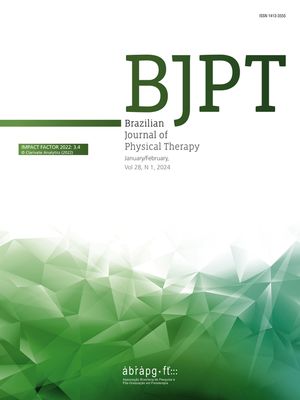
1st STUDENT SCIENTIFIC CONFERENCE OF THE BRAZILIAN ASSOCIATION FOR RESEARCH AND POSTGRADUATE IN PHYSIOTHERAPY (ABRAPG-FT)
More infoMyelomeningocele is the most frequent malformation of spina bifida and is characterized by muscle weakness or paralysis and loss of sensation below the affected lesion level, bladder and bowel incontinence, and hydrocephalus. The functional limitations present can lead to restriction of participation of these children, which includes the frequency and involvement of an individual in a life situation. There are few studies about the participation of these children under 6 years of age in the home, preschool and community environments.
MethodsA descriptive observational study was carried out with children diagnosed with myelomeningocele, between 6 months and 5 years of age, submitted to pre or postnatal surgical correction, regardless of the neurological level, who are followed up by a service of the complex of a university hospital, using the Young Children's Participation Environment Measure (YC-PEM) questionnaire.
ResultsSixty-four children and their families (mean age 28.21 (±17.31) months) participated in the study. Children were more frequently involved in the home environment, mainly in activities related to history and music (mean = 6.51±1.28; 4.33±1.50 respectively) and involving the use of electronics (mean = 6.42±1.48; 4.26±1.51). Most parents reported that the children's relationship with family members (90.63%), the social aspects of communication and interaction (87.50%), the availability of resources (87.50%) and having enough time (78.13%) supported their children's participation at home. In preschool, the highest frequency and involvement were related to activities involving groups of colleagues (mean = 6.33±0.77; 4.33±1.16) and socializing with friends (mean = 5.89 ±1.59; 3.36±2.21). On the other hand, children participated little in activities involving outings and events (mean = 2.10±2.07; 1.36±1.94). A large number of parents considered that the school environment has more facilitators than barriers. Within the community environment, children were more likely to participate in appointments, and purchases or services. The frequency of children's participation in community activities such as classes and courses were zero. Parents identified characteristics and resources in the community environment that mostly support their children's participation (70.58%), but also recognize aspects that restrict their participation (17.64%).
ConclusionThe participation of young children with myelomeningocele is relatively high in the home environment. However, in the preschool and community setting, it is significantly restricted. These children's participation is influenced in all settings by environmental factors.
Implications.
ImplicationsThese findings provide a foundation for an improved understanding of the participation of children with myelomeningocele, and this information which can assist families and service providers in planning activities that fit with their child's preferences and ensure active participation.
Conflict of interest: The authors declare no conflict of interest.
Acknowledgment: We thank the Universidade Federal de Minas Gerais (UFMG) for the institutional support, FAPEMIG, CNPq and CAPES for the financial support and scholarships.
Ethics committee approval: Universidade Federal de Minas Gerais (UFMG) (CAAE: 38282620.0.0000.5149).





